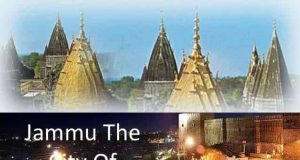Ugadi – The New Year’s Day for the Deccan Region
Festivals are celebrated annually to commemorate events occurred in the past holding some purpose and significance in the eternal cycle of world history. India’s rich bequest including its festivals spread the message of relief and faith through its morals, charms, and rituals. Out of such Indian festivals, Ugadi/Yugadi is celebrated with enthusiasm in Maharashtra, Karnataka, and Andhra Pradesh., In Maharashtra, it is celebrated as Gudi Padwa, while Sindhis of Sindh name it as Cheti Chand.
The name Yugadi is an amalgamation of two words namely, ‘Yuga’ meaning ‘era’ and ‘Aadi’ meaning ‘start’, which literally convey – The Start of an Era. The festival marks the first day of the New Year for the population residing in the Deccan region of India. Every year, the date varies, as India follows the lunisolar calendar, according to which the first day of the first month is Chaitra that falls in March/April.
The festival holds special significance, as it comes after Holi in which people purify their souls by digesting the knowledge of God and nourishing the divine virtues within. Therefore, with this spiritual upliftment, people start their new year. Further, the first season in their new year is that of the spring in which new life is bestowed upon the flora and fauna that acquire leaves, fruits, and flowers. Nature announcing a new beginning, the vitality of life and lush fields and meadows adorned with colorful blooms spread the message of growth, success, and happiness. Symbolically, it means thanks giving for abundant production of crops.
On the advent of Ugadi, mangoes, neems, and natural jasmines (mallepulu) spread its fragrance in the air and purify it. This phenomena is in itself has no other match, not even any other nature’s own creation!
Legend
A popular belief holds that Lord Brahma, the creator of the universe, actually started the creation on the Ugadi day, also known as the Chaitra Suddha Padyami. In addition, the great Indian Mathematician Bhaskaracharya’s computations stated that the Ugadi day is from the sunrise and is the advent of the new day, month, and year.
It is believed that in future, the Ugadi day will mark the next era or age known as Satyuga of the Eternal World Drama Cycle after the present age of Kaliyuga. According to the Hindu mythology, there are four age cycles in the World Drama Cycle namely, Golden age, Silver age, Copper age, and Iron Age that correspond to Satyuga or Krutha Yuga, Treta yuga, Dwapar Yuga and Kaliyuga. Currently, we are in the Iron Age, Kaliyuga – the era of decline in moral values, impurity, and chaos due to ignorance and where there is no unity in deeds through body, speech, and mind. On the other hand, the Satyuga marks the presence of highly elevated souls, peace, wealth, and prosperity. Therefore, Kaliyuga is the night of Brahma and Satyuga as the day of Brahma.
Predicting the New Year
Ugadi is the advent of the new lunar calendar as the moon changes its orbit and after the Sun passes through the equator from south to north. As per the tradition, mantras are chanted and predictions are made for the New Year. The Panchanga Sravanam or heeding to the New Year’s calendar at the temples or Town square is now replaced by the television sets broadcasting the priest-scholar informing about it in a living room.
Preparations for the Celebrations
Before Ugadi
The arrangements for the festival start before one week. With a lot of zeal, houses are washed properly, new clothes are shopped, and new items are purchased that indeed form the necessities of the festival. In the Hindu’s Holy Book, Srimad Bhagavad Gita, it is written that the For the Soul, the eternal one that takes several births in the four Yugas, Body is its Cloth. When the immortal soul gets a new birth, that is when it obtains a new body as a toddler, it means that the soul has born a new cloth. Therefore, Ugadi marks the beginning of new age, Satyuga along with new life.
On Ugadi
Decoration
People get up before the sunrise, take a oil bath, and then only they adorn the doorway of their homes by tying a torana (a horizontal holy string) of fresh mango leaves. According to the legend signifying the tying of mango leaves, Kartik also known as Subramanya or Kumara Swamy and Ganesha, the sons of Lord Siva and Parvati, love mangoes very much. Kartik actually has encouraged people to tie green mango leaves just above the doorway that symbolize a good harvest and general welfare. Spiritually, it is said that Lord Shiva is the Absolute Soul referred to as the Trimurti Shiva and Paramatma Shiva, meaning who is the Supreme Lord of all deities including Lord Brahma and Lord Vishnu. As Lord Shiva is the Spiritual Father of all souls, we, humans, have right to achieve Peace, Prosperity, Health, Wealth, and Happiness through the festival of Ugadi by transforming ourselves by turning the vices into divine virtues through Spiritual or Godly knowledge. Sprinkling fresh cow dung water on the floor in front of their house and making colorful floral designs forms the part of the celebration in every home. Specifically, in Maharashtra, people build a ‘Gudi’, which is a bamboo decorated with a colored silk fabric and a decorated goblet on it signifying victory.
Prayers
Ritually, people worship God in temples to seek his blessings before they actually start their new year. They offer large garlands of jasmine to God even in homes and pray for health, wealth, success, and prosperity. After worship, many people grasp the auspicious opportunity to enter into new ventures.
Gatherings and Food
The Kannada and Telugu people gather to greet each other on this day, which is followed by a lavish feast are ‘de rigueur’. A specific mixture called Ugadi Pachadi in Telugu and Bevu-Bella in Kannada of the following items is made and eaten that signify the balance of different tastes and emotions in life.
- Neem buds/flowers for bitterness marks Kaliyuga
- Raw mango for savor
- Tamarind juice for sourness
- Green Chilli/Pepper for heat
- Jaggery and banana pieces for sweetness marks Satyuga
- Pinch of salt for saltiness
The above items symbolize sadness, happiness, anger, fear, disgust, and surprise; which should be received with equanimity. In Andhra Pradesh, Bobbatlu meaning Puran Poli (sweet rotis) in Maharashtra (boiled Bengal gram and jaggery/sugar stuffed in roti) and preparations of raw mango are popular. In Karnataka, same items are made, but bobbatlu is called Holige. In Maharashtra, Puri and Shrikhand (sweet yoghurt with dry fruits) marks the celebrations.
Kavi Sammelanam
Literally, meaning poetry recitation, it is a typical Telugu style of celebrating the day. Here, people enjoy a literary feast wherein many poets tell their new poems related to subjects such as on Ugadi, politics, and modern trends. It is a golden opportunity for the new poets to show their talent. One can hear it live on All India Radio’s Hyderabad A station and can see it on the Doordarshan channel of Hyderabad on the TV after watching Panchanga Sravanam. Poets come up from different backgrounds – political, comic, and reformist – making the day as the festival of hues.
Ugadi ((Gudi Padwa)) Festival Date For 2022 – Saturday, 2 April


